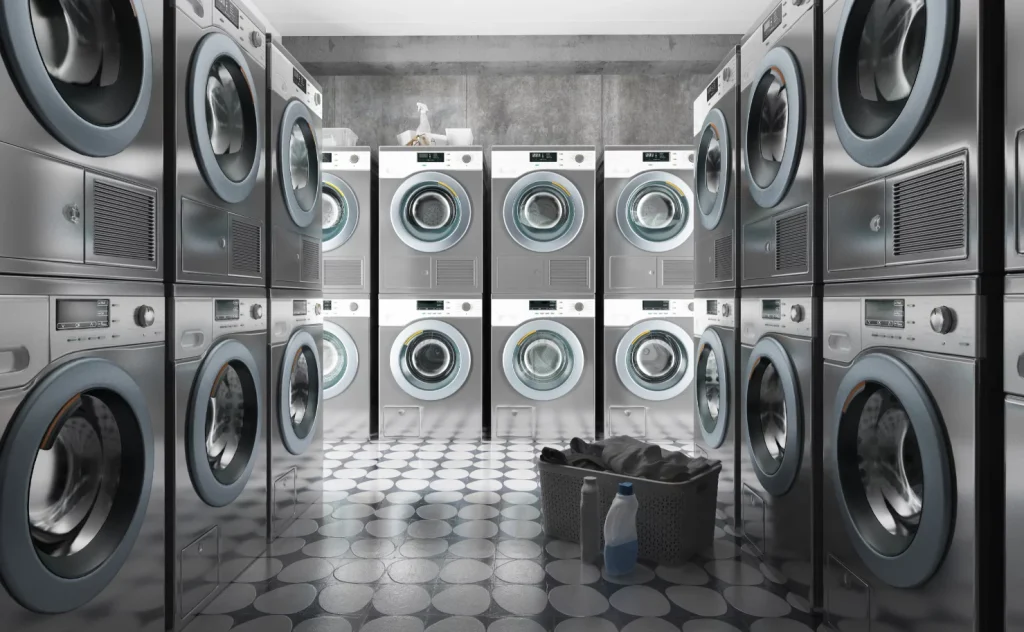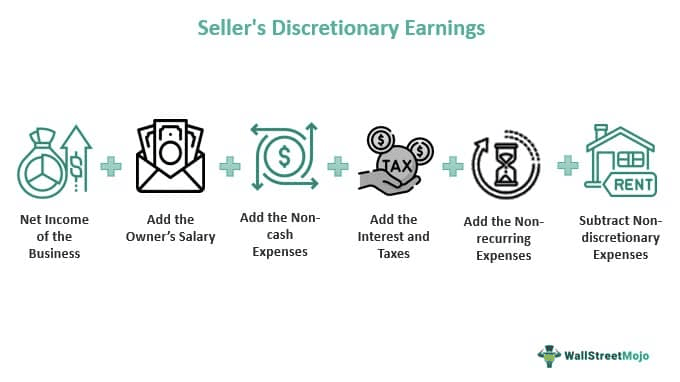How to Start a Coin Laundromat: A Complete Beginner’s Guide
Thinking about starting a coin laundromat? As a business owner and broker who’s helped buy and sell dozens of laundromats, I’m here to walk you through the real process… From finding the right location to evaluating earnings and avoiding deal-breaker mistakes.
In this guide, I’ll explain how to properly value a laundromat, understand key financial metrics like NOI and SDE, and what trends are shaping the market in 2025 and beyond. If you’re serious about owning a laundromat, keep reading. Getting it right from the start can make all the difference when learning How to Start a Coin Laundromat!

Why I Believe Laundromats Are One of the Best First-Time Small Business Investments
When I first got into small business acquisitions, I was drawn to service-based businesses like HVAC companies and cleaning services. But it was laundromats that really caught my attention.
The appeal is simple yet powerful: laundromats offer a semi-passive income model, essential services that withstand economic cycles, and scalable profit potential with relatively low staffing needs.
After my first laundromat acquisition, I realized just how critical due diligence, valuation accuracy, and exit strategy planning are to long-term success.
If you’re considering starting a coin laundromat from scratch or acquiring an existing one, you’re in the right place.
Understanding the Laundromat Model: What Makes It So Attractive?
One thing that consistently gets overlooked is just how resilient laundromats are. People will always need clean clothes, regardless of the economy. Most laundromat customers are renters or live in dense urban areas where home laundry isn’t practical.
A well-run laundromat offers:
- Steady Cash Flow: Coin-operated models generate predictable, recurring income.
- Low Staffing Requirements: Many operations require only minimal oversight or part-time attendance.
- Scalability: Multiple locations are easier to manage once systems are in place.
Most importantly, with smart upgrades—like installing a card payment system or offering wash-and-fold services—you can significantly boost revenues and stay ahead in a competitive market.
Step 1: Choosing the Right Location
The old saying is true: location is everything. Your laundromat’s viability hinges largely on picking the right spot.
Through my years in the business, I can say confidently that thriving laundromats usually share three critical real estate elements:
- Dense, rental-heavy populations: The ideal customer base doesn’t own washers and dryers at home.
- High visibility and ample parking: Convenience drives higher usage rates.
- Reasonable lease terms: Leases that eat more than 10% of gross income are red flags.
In negotiations, securing a long-term lease (ideally 10 years with options to renew) gives you crucial stability. Never underestimate how quickly a “great deal” on a laundromat can turn sour if the landlord drastically increases rent after only a few years.
Step 2: Understanding Laundromat Valuation (And Avoiding Overpayment)
If you want to build lasting wealth in this sector, you must know how to properly value a laundromat. Too often, beginners overpay because they don’t understand the nuances of laundromat appraisal.
When brokers and savvy investors look at laundromats, they prioritize three metrics:
Seller’s Discretionary Earnings (SDE) and Small Business Sale Multiples
SDE represents the total financial benefit an owner-operator derives from the business. This includes salary, owner perks, non-essential expenses, and profit. Currently, small business sale multiples for laundromats hover between 3.16x and 4.23x SDE.

Here’s a real-world example from a recent deal I brokered:
- A laundromat generated $100,000 annual SDE.
- We applied a 3.5x multiple (given moderately dated equipment and solid location).
- Valuation: $350,000.
Simple enough on paper, but it takes experience to adjust for variables like underreported cash income or inflated labor estimates.
Related: SDE = Seller’s Discretionary Earnings
Net Operating Income (NOI)
While NOI is gold standard in real estate, it’s less commonly the final say in laundromat valuation because these businesses are largely owner-operated. Still, for high-end, manager-run operations or those tied closely to real estate (laundromat + building package deals), NOI becomes essential.
To calculate NOI:
Gross Revenue – Operating Expenses = NOI
Higher NOI usually commands better sale multiples. More importantly, it shows how efficient (or bloated) an operation is.
Equipment, Lease, and Physical Condition
Physical assets heavily influence laundromat valuation. When doing an in-depth laundromat appraisal, I inspect:
- Machine age: Equipment over 10 years old usually signals upcoming replacement costs.
- Vend pricing relative to market: Underpriced laundromats often have room for margin improvements.
- Lease structure: Short leases without renewal options make financing hard and valuation dip.
One of my biggest success stories was helping a buyer secure favorable financing because the seller had just installed $200,000 worth of energy-efficient washers—a critical value-add that justified a higher asking price.
Related: Is Owning A Laundromat Profitable?
Step 3: Structuring the Deal: Acquisition Strategies (And Pitfalls)
In today’s environment (2023–2025), deal structures matter more than ever. Many buyers use creative strategies like seller financing or master leasing to lessen upfront cash requirements.
When helping clients purchase a laundromat, I always remind them: make transition planning part of the negotiation. That includes vendor relationships, employee retention, and smooth onsite operations during the handover.
Here are a few red flags I watch for when evaluating prospects:
- Inflated SDE: If the seller isn’t factoring their full-time labor correctly, financials are misleading.
- Underutilized equipment: Rows of idle machines indicate excess capacity or demand miscalculation.
- Rent eating margins alive: Anything over 10% gross revenue going to rent sends me running.
Good deals prioritize seller transparency and solid paperwork. Bad deals hide critical defects behind vague numbers. Now the next step to how to start a coin laundromat
Step 4: Upgrading and Operating for Profit
After acquisition comes optimization.
Smart operators modernize laundromats with card-payment systems (which double as customer tracking solutions), install energy-efficient machines to cut utility costs, and diversify income streams with high-margin offerings like:
- Wash-and-fold services
- Pickup and delivery laundry
- Retail sales (detergent, snacks, etc.)
The most profitable laundromat I ever owned didn’t just rely on foot traffic; it built consistent revenue through large hotel accounts, college dorm partnerships, and subscription-based laundry plans.
Step 5: Planning Your Exit: Selling a Laundromat for Maximum Value
I always tell my clients: think about selling even before you buy. A clean set of books, modern equipment, and solid lease terms aren’t just good business—they’re the foundation of a higher exit price when it’s time for selling a laundromat.
In today’s market, we’re seeing median laundromat sale prices around $235,000 with sale multiples of 3.46x reported earnings. Those numbers are only rising, especially for tech-enhanced, energy-efficient locations.
If you want to achieve a premium outcome when selling, focus on:
- Consistent documentation: Tax returns, vendor contracts, lease agreements neatly organized.
- Systematized operations: Clear manuals and processes help buyers envision passive ownership.
- Proven ancillary revenues: If you added profitable services, brag about them in your listing.
Related: 3 Reasons Why You Can Buy a Business Without Experience
How to Start a Coin Laundromat Emerging Trends (2024–2025): Why This Is Still the Time to Start
Laundromats are evolving beyond ultra-basic coin operations. Buyers and customers both favor tech-and-service hybrid models now. Payment apps, automated customer service kiosks, and dynamic pricing are all surging in popularity.
Recent market data suggests laundromats are seeing an annual value increase of roughly 8%, largely driven by modernization and add-on services. If you future-proof your business now, you’ll not only enjoy healthier cash flow but a stronger position when it’s eventually time to sell.
Master leasing and seller financing are more popular than ever too—making it financially easier to get in the game than when I started.
Related: How to Buy a Laundromat With No Money
How to Start a Coin Laundromat: Ready to Dive In?
Starting a coin laundromat can be one of the smartest moves you’ll ever make—if you approach it with the right knowledge and strategic mindset. I’ve personally seen clients change their lives by owning just one well-run laundromat… and I’ve watched others lose money by ignoring key valuation metrics and operating blind.
If you’re ready, I’d love to give you a head start.
Time, and clean clothes, wait for no one. Let’s make your laundromat dreams real—start now!